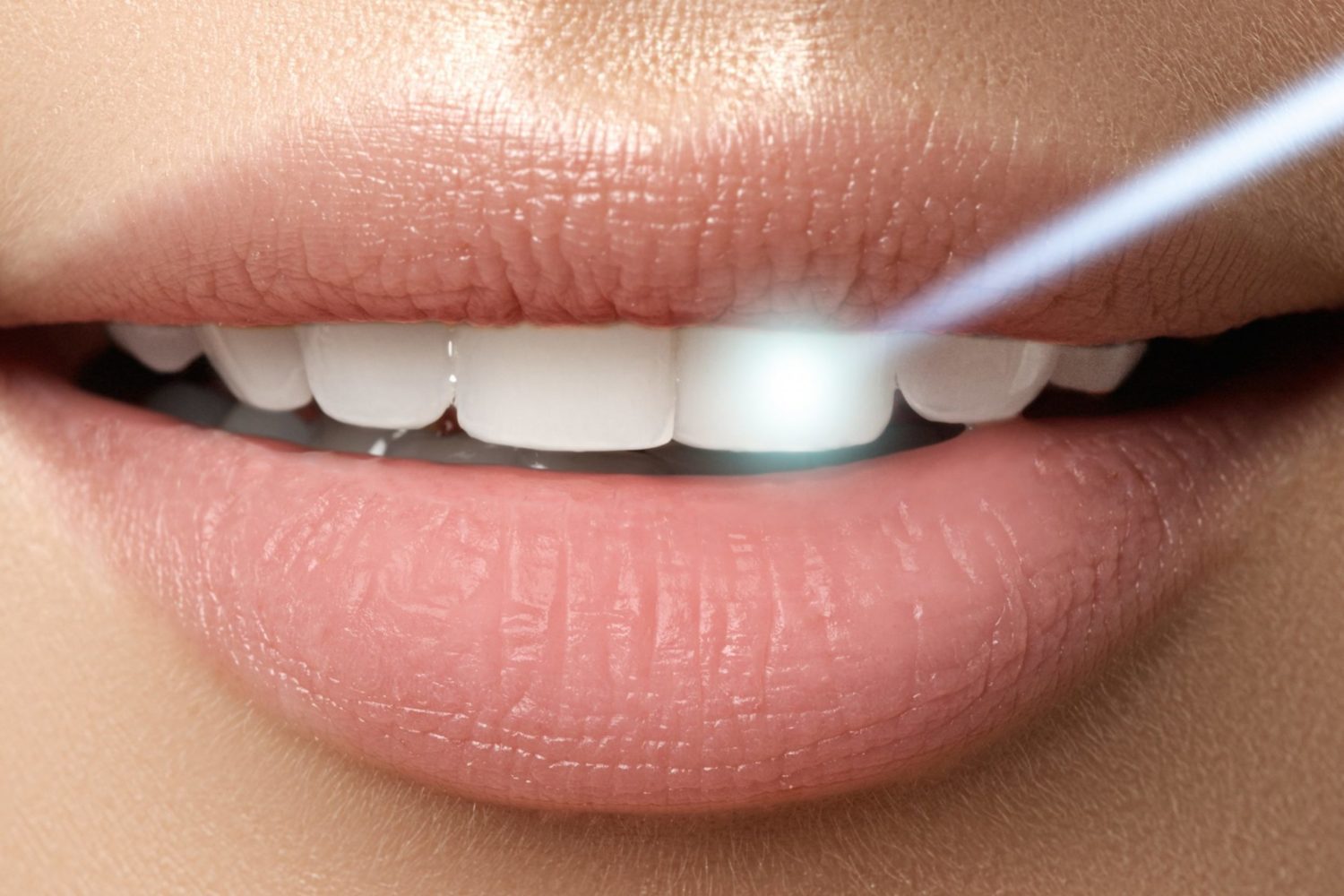By J. S. Ronette—WASHINGTON, DC—“Does it REALLY matter where we have our teeth cleaned?” A cleaning is a cleaning. Right? Well, it turns out high-tech changes are making hygiene visits far from typical! The question is: Are we talking about differences that can really make—a difference?
“Actually, not all dental cleanings are the same, and ‘yes’ it makes a difference,” says Dr. Daniel Deutsch. “Most offices have done it the same way for the last 50 years—use a pointy explorer dental instrument to feel for holes in teeth, take x-rays, scrape teeth or use an ultrasonic cleaner, then polish with the rubber cup and minty pumice paste. Today, there are a growing number of technology-based tools that clean more effectively, find dental problems sooner, even prevent problems from occurring. And the biggest payoff is healthier patients, with less decay, fewer gum infections—and the need for less treatment.”
Speaking from his 16-treatment room office at the Washington Center for Dentistry on K Street, Dr. Deutsch ticks off a list of cutting-edge treatments he and his team of four dentists and one periodontist provide with the goal of out-performing traditional methods, and maintaining healthier mouths. “As we now know,” he says, “research now has proven that you can’t have a healthy body without a healthy mouth.”
“The biggest payoff is healthier patients, with less decay, fewer gum infections—and the need for less treatment.”, says Dr. Daniel Deutsch.
Here is his list of latest advanced hygiene services:
1. “Super Cleaner Air Flow Polisher”– The latest and most exciting addition in his tooth-cleaning weaponry is a high-tech “wand” that uses water, compressed air and microscopic fine powder particles to gently clean and polish teeth in ways never seen before!
This new technology is the first-ever advancement over the old techniques of just scraping the root of the tooth below the gum line to try to remove harmful plaque or colonies of disease-causing bacteria called—biofilm. If left alone, the bacteria in biofilm secrete toxins and acids that cause problems like gum infections and tooth decay.
“The old technique was never entirely successful because biofilm hides below the gum line, is hard to see, and the hard-to-clean root surface is irregular, with many nooks and crannies,” Dr. Deutsch says. “This new technology is a game-changer, resulting in squeaky clean elimination of biofilm in an area we could never reach before—with this thorough kind of cleaning. And the more effective we are in removing biofilm, the more effective we are in getting gums healthy, decreasing infection and inflammation in the mouth, and also decreasing the patient’s overall dangerous inflammatory load. That results in better overall body health.”
As we now know, research now has proven that you can’t have a healthy body without a healthy mouth.
2. Replacing the old dental explorer instrument with a laser decay detector: With the “Diagnodent Decay Finder” Deutsch and his team now can discover even the smallest areas of tooth decay. The point of its pen-like laser probe, placed on the surface of the tooth, measures the presence of decay through the outer layer of enamel.
In a few seconds, a number appears on the screen, showing the beginning of decay, before it even affects the tooth! This one-of-a-kind tool can find even the smallest pin-dots of decay that were once impossible to see until they had gotten larger and larger.
In many ways, this replaces the sharp, pointy instrument probe dentists use to poke on our teeth and other diagnostic techniques that can miss more than 50 percent of tooth decay. “Now we can absolutely eliminate many large fillings that lead to cracked teeth, crowns and other more invasive treatment,” says Dr. Deutsch.
Today, grooves on biting surfaces of teeth are the site of many cavities, which are also most difficult to detect with x-rays. This often undetectable decay can literally destroy teeth from the inside out. Now, decay can be detected at the earliest possible moment. A small, pin-dot on a crevice often gets a tooth-colored “sealant filling” instead of a larger procedure down the road.
3. Advancement over regular x-ray: Decay has nowhere to hide when the “Dexis Cari-Vu Trans Illumination Device” is on the scene. This sleek, safe infrared light miraculously lights up healthy tooth structure, but not decay. Decay does not allow light to pass through, so it shows up as a dark area. These areas of decay and cracks are almost impossible to see on regular x-ray.
The CariVu wand accurately spots the darker decay at early stages, especially decay that lurks in difficult to detect areas—between the teeth. “Our ability to look “inside” a tooth and see decay and cracks in this way—x-ray vision without x-ray—means patients get a much more accurate diagnosis,” says Dr. Deutsch. While it looks like an x-ray, the image—made with no radiation—actually more accurately verifies the health of a tooth.
While it looks like an x-ray, the image—made with no radiation—more accurately verifies the health of a tooth.
“Unlike a two-dimensional x-ray image, this real-time light uses no radiation to help detect cavities,” he says, “and even the tiniest cracks can be treated before problems arise. These cracks that previously might have gone undetected weaken the structure of a tooth, leading to breakage that can lead to root canals or crowns.”
4. “Florida Probe System” is a multi-tasking tool that consists of a special probe and footswitch that works in a “Siri-like” manner to precisely record important data about gum health. Once the probe is placed on the gum, a digitized voice “calls out” important numerical readings about bleeding, depth of gum pockets, plaque, mobility and other diagnostic information. And all of this data gets automatically recorded within the patient’s digital record.
5. “Computerized 3-D X-Ray” –While traditional x-ray focuses on teeth and are two-dimensional, 3-D x-rays gather every aspect of the mouth, head and neck with precision and accuracy, using 90 percent less radiation! The machine is basically an X-Ray scanner mounted on a rotating arm that does all the work. As a patient sits in a chair, the scanner moves around the head, getting all the data that is needed. Once the data is collected, dentists can focus on whatever needs attention, such as bone lesions, tooth infections and bone density problems. The 3-D x-rays also provide more accurate diagnosis and guidance to place implants more precisely and safely.
6. “Intra-Oral TV Diagnostic Imaging”—This tiny, pen-sized camera brings advanced technology right into our mouths to get detailed pictures and highlight damaged fillings and crowns, gum disease—any budding problems that may cause future problems. “The video image fills a full-color screen, so a patient is more involved in talking about options,” Dr. Deutsch says. “And since the images can be magnified and are so detailed, dentists love catching things that might have gone unnoticed. And patients can now see what the dentist sees, making things easier to understand.”
“We tell our patients, the latest science is definitive.” says Dr. Deutsch. “We can’t have a healthy body without a healthy mouth. With many of our patients already aware of the oral-health-body-health connection, they love a clear message about their health they can really relate to. And these high-tech tools speak loud and clear.”
Dr. Daniel Deutsch practices at the Washington Center for Dentistry, 1430 K Street NW, Washington, DC www.washdent.com
– J.S. Ronette is a Washington, DC writer.



